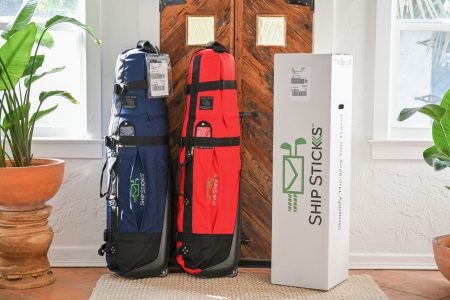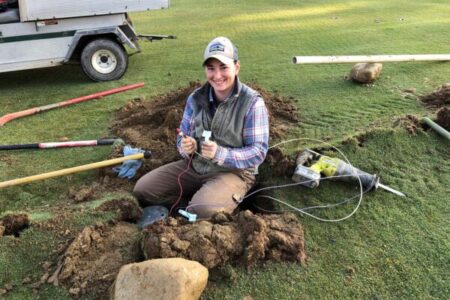Del Ratcliffe fully appreciates the benefits of a par 3 golf course. He grew up playing one his father built in 1960 on a farm about 10 to 15 miles outside of downtown Charlotte. Today, Ratcliffe owns or operates five facilities in the Charlotte area – four of which feature a par 3 layout of some fashion.
“I’ve always felt that par 3 courses were a critical component of our growth of the game – introducing people to it,” says Ratcliffe, a longtime NGF member who owns Ratcliffe Golf Services, Inc. and is the president of the North Carolina chapter of the National Golf Course Owners Association.
There are close to 700 par 3 courses in the U.S., according to the NGF facility database, almost 10% more than the number of Red Lobster chain restaurants that can be found coast to coast.
California has the most par 3 courses, with 74, followed by Florida (58), Wisconsin (33), Texas (30) and New York (27). Together, these five states account for about one-third of the total U.S. par 3 course supply.
Par 3 courses can be found in every U.S. state but one, from the acclaimed 13-hole Bandon Preserve at the Bandon Dunes Golf Resort on the Oregon coast to the scenic Top of the Rock at Big Cedar Lodge in Ridgedale, Missouri, and the highly-regarded Palm Beach Par 3 in Florida.

Overhead view of the Palm Beach Par 3 (Photo courtesy: golfontheocean.com)
One of the nation’s most famous par 3 courses can be found at Augusta National Golf Club in Georgia and has been home to the Masters Tournament’s annual Par 3 Contest since 1960. While that course is private, the majority of par 3 courses (81%) allow public play, much like most golf supply in the U.S.
Par 3 courses come in a variety of shapes and sizes, but almost 90% of them have playing fees of less than $30, making them an affordable and appealing option for every golfer, regardless of experience or skill level. More experienced golfers might use them to fine-tune their short game while beginning golfers and more novice players can use them to improve and get more comfortable on the course.
Ratcliffe saw that first-hand, as the facility his father built with consultation from the NGF had 9-hole regulation course as well as a 9-hole par 3 course.
“I’ve spent a lot of my lifetime trying to come up with ways we can create more golfers and teach the game to people; I’ll be honest, I think my daddy, by building that little golf course, created more golfers than anybody I’ve ever known,” said Ratcliffe. “And he never taught a single lesson. All he did was give the right kind of a place to learn the game, and from all ages, too.
“It was very successful,” Ratcliffe said of the facility, which operated up until the early 1990s. “When we closed it, it closed because of urban development. The property became too valuable for commercial real estate use to keep the golf course on it. Now, 30 years later, I still have people come to me on a regular basis and say, `The first round of golf I ever played was on that little golf course that y’all had.’”
When the Ratcliffe family sold the property in the Northeast section of Charlotte, they kept 12 acres in a flood plain and built the 18-hole Paradise Valley Par 3, which has plenty of water holes, including two with island greens.

One of the island greens at the Paradise Valley Par 3 Course in Charlotte. (Photo courtesy: charlottepublicgolf.com)
Ratcliffe also has a 9-hole par 3 course called Sunset Hills, which has six sets of tees on every hole. As a result, several holes can stretch from 200 to 230 yards, allowing them to be played as short par 4s for some players.
“It’s closer to an executive length golf course; a hybrid,” Ratcliffe says of Sunset Hills, which is nestled in a 40-acre wooded tract. “It’s a needed in-between facility after the 70-yard-and-less par 3’s that are the real incubators. Those are the ‘bunny slopes.’ That’s something that someone with no experience can go out there and learn the game on.”
Ratcliffe also has those in his portfolio. In fact, there are 3-hole, par 3 layouts affiliated with both of the 18-hole, regulation-length, public courses his company manages for Mecklenburg County Park and Recreation.
“We partner those with our regulation golf courses,” says Ratcliffe, noting they’re both built on less than two acres of land. “It’s something we use for teaching. We make (the one at Charles T. Myers) available to the local First Tee chapter and there’s very active programming. We encourage people to come out and play it to learn the game and practice their short game. It gets a lot of use.”

Overall, 80% of par 3 courses are of the 9-hole variety.
Many golfers can play a par 3 course – whether its nine or 18 holes — in the same amount of time it takes to watch a movie. And Ratcliffe knows the impact these short but sweet layouts can have on golfer development.
“In Charlotte, if we had not had that golf course my dad built, I don’t know that we would have the number of golfers and enjoy the success we do with our golf facilities today because a lot less people would probably be playing golf.”




